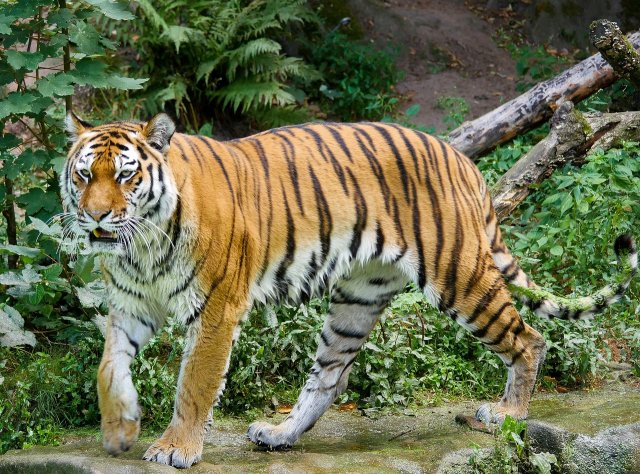5 Fascinating Tiger Camouflage Adaptations
Unveiling the Astonishing Tiger Camouflage Adaptations: Nature’s Masterpiece
Tiger Camouflage Adaptations: Tigers are known for their majestic appearance and powerful presence in the wild. One of the key factors that contribute to their success as predators is their remarkable camouflage adaptations. These adaptations allow them to blend seamlessly into their surroundings, making them highly effective hunters. In this article, we will explore five fascinating tiger camouflage adaptations that showcase their incredible ability to disappear in plain sight.
1. Striking Coat Patterns
Tigers have a unique coat pattern consisting of dark stripes on a lighter background. This pattern, known as disruptive coloration, helps them break up their body shape and blend into the dappled light and shadows of their habitat. The stripes also serve as a form of camouflage by mimicking the vertical lines of tall grass or tree trunks, making it difficult for prey to detect their presence.
For example, when a tiger is stalking its prey in tall grass, the vertical stripes on its body create an illusion that merges with the surrounding vegetation. This makes it nearly impossible for potential prey, such as deer or wild boar, to spot the tiger until it is too late.
2. Effective Counter-Shading
Tigers have a unique coloration that is darker on the top and lighter on the underside of their body. This coloration, known as counter-shading, helps them blend into their environment by reducing the contrast between their body and the surrounding light conditions.
When viewed from above, the dark upper body of a tiger blends with the shadows on the forest floor, making it difficult for predators or prey to spot them. Similarly, when viewed from below, the lighter underside of their body blends with the sunlight filtering through the canopy, making them less visible to potential threats.
3. Disguised Movement
Tigers are not only masters of camouflage in terms of their appearance but also in their movement. They have a unique way of moving through their environment that allows them to remain undetected by both prey and predators.
When stalking their prey, tigers move slowly and stealthily, taking advantage of their powerful muscles and flexible bodies. They carefully place each paw down, minimizing noise and vibrations that could alert their prey. This slow and deliberate movement, combined with their camouflage adaptations, allows them to get close to their prey without being noticed.
4. Silent Hunting Techniques
Tigers are known for their ability to silently approach their prey, thanks to their specialized adaptations that minimize noise. Their large padded paws act as natural shock absorbers, allowing them to move silently through various terrains, including dense forests and grasslands.
Additionally, tigers have a unique adaptation in their throat called a laryngeal diverticulum. This structure allows them to produce a low-frequency vocalization known as a “chuff” instead of a typical roar. The chuff is a soft and non-threatening sound that tigers use to communicate with each other and avoid alerting their prey to their presence.
5. Camouflage in Water
Tigers are excellent swimmers and are known to be highly adaptable to different environments, including wetlands and mangrove forests. Their camouflage adaptations extend to their aquatic hunting techniques as well.
When swimming, tigers use their unique coat pattern to their advantage. The stripes on their body break up their silhouette, making it difficult for potential prey, such as deer or wild boar, to detect them in the water. This allows tigers to approach their prey silently and launch a surprise attack.
Summary
Tiger Camouflage Adaptations: Tigers are truly remarkable creatures with incredible camouflage adaptations that enable them to thrive in their natural habitats. Their striking coat patterns, effective counter-shading, disguised movement, silent hunting techniques, and camouflage in water all contribute to their success as apex predators.
By blending seamlessly into their surroundings, tigers can approach their prey undetected, ensuring a higher chance of a successful hunt. These adaptations not only showcase the beauty and complexity of nature but also highlight the importance of camouflage in the survival of these magnificent creatures.
Next time you catch a glimpse of a tiger in the wild or in a photograph, take a moment to appreciate the intricate adaptations that allow them to disappear in plain sight.
Discover the Untamed Beauty of Big Cats: Explore the Enchanting Stories of Big Cat Rescue





